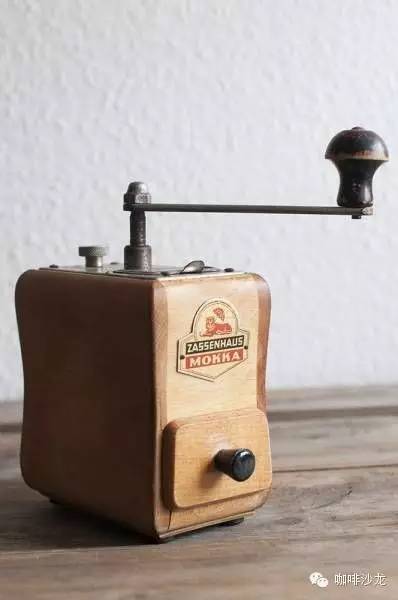Why are there black spots in baking? The problem of blackhead scorched spot roasting coffee beans espresso
In the coffee roasting process, the phenomenon of "blackheads" (or blackspots) is quite common, especially when we are just in the early stages of roasting. Generally appear at both ends of the coffee bean, deeper baking degree of the case, but also often appear on the back of the coffee bean.

Why are there "blackheads"?
First of all, we can be sure that this must be related to "heating", when the baking temperature is too high or the heat transfer efficiency of the baking process is too fast, it may cause black spots. Coffee beans do not have time to absorb and transfer heat, resulting in severe local heating. For example, a higher bean temperature in the initial stage of baking, or when heating is needed, the temperature rises too fast (the slope on the baking curve is too large), or a lower drum speed may cause blackheads.
Don't worry, it's just "blackheads"! If there is a blackhead of coffee that tastes like ok, it's not a danger signal, at least in terms of the speed at which the temperature rises, it gives you a positive signal. If you are not satisfied with the drink, the blackhead will also provide you with the direction of baking correction. If we have to contact the person who drinks this cup of coffee again, his preference, the question will become unsolved. After all, some people like charcoal roast lamb chops, while others like to eat stewed lamb chops. Of course, "blackhead" is just a form of appearance of coffee beans, we do not have to talk about color change, because coffee beans will eventually be made into a cup to drink, and the goal of revising the baking method is not just to avoid blackheads and everything will be fine. As practitioners of the industry, at least for us, we should not completely ignore the irrationality of its existence because of its possible rationality. After all, tasting is only the first step in baking. (to put it bluntly, don't use vague concepts like taste in the cup and personal preference to correct the serious matter of baking defects. )
As we all know, at present, the mainstream baking equipment is mainly divided into hot air (convection heat), direct heat (conduction heat) and semi-hot air (convection + conduction heat). {reply to "roaster" can obtain knowledge about the heat source of the roaster. Push}, students who are familiar with baking equipment, the next question comes, is the blackhead caused by heat transfer or convection heat? In other words, should I adjust the throttle or firepower, or even drum speed? For coffee beans, no matter which form of heating it is, the reaction on its "body" is heat energy. When the amount of heat applied is greater than the range of coffee beans, it will appear in the form of focus. If you exaggerate a little more, it may show you the whole coke, while the bean core may still be raw. In the whole process, the first explosion and the second explosion will come as expected, and the occurrence will be very dense.
Blackhead (Tipping):
This is what we call "blackheads". It seems to be more common in flatbean than in peaberry, especially those with lower density and softer beans, such as Brazil. If you bake too fast, it is easy to find "blackheads" in cooked beans. Therefore, in order to reduce the "blackhead" phenomenon, our suggestion is to reduce the bean temperature, adjust the firepower distribution to prolong the baking time, and relatively increase the convective heat efficiency (increase the efficiency of the throttle, if the drum can adjust the speed. Consider increasing the speed).
Focal spot (Scorching):
In our experience, the emergence of "focal spots" is due to the high efficiency of conducting heat (contact heat). Of course, too fast baking may also cause focal spots. In the drum speed adjustable equipment, too slow speed is easy to form focal spots. Coffee beans contact with the drum for too long, the area is too large, local scald will occur. It is recommended to consider whether to increase the speed according to the actual situation (a reference data is provided here, the fixed speed of PROBAT is 60 rpm / min). If the rotational speed is already at a large value, whether the roasting amount of coffee beans has exceeded the optimal roasting capacity of the equipment? For example: the same 5kg roaster, 5kg's Yega Xuefei and 5kg's gold Manning volume is very different, bean watch and drum wall contact area is also different.
In the drum speed fixed equipment, too high heat transfer efficiency will also form a "focal spot". It can be improved by increasing the throttle to increase the efficiency of convective heat (hot air heat) and relatively reduce the conduction heat efficiency. If it is a direct fire equipment, you need to adjust the firepower size and firepower distribution to correct it. Usually, most straight-fire roasted coffee takes longer than hot-air and semi-hot-air roasters.
Important Notice :
前街咖啡 FrontStreet Coffee has moved to new addredd:
FrontStreet Coffee Address: 315,Donghua East Road,GuangZhou
Tel:020 38364473
- Prev

Bonavita coffee brewing equipment hand brewing coffee pot filter cup smart cup coffee brewing method
Boutique coffee (specialty coffee) is also called specialty coffee selection coffee. It refers to coffee made from a small number of raw beans with excellent taste grown in an ideal geographical environment. Depending on the special soil and climatic conditions in which they grow, they have outstanding flavor. After strict selection and classification, this kind of coffee is hard in texture, rich in taste and stylish.
- Next

Siphon pot extraction coffee stuffy cooking time match time Japanese coffee utensils single coffee
Boutique coffee (specialty coffee) is also called specialty coffee selection coffee. It refers to coffee made from a small number of raw beans with excellent taste grown in an ideal geographical environment. Depending on the special soil and climatic conditions in which they grow, they have outstanding flavor. After strict selection and classification, this kind of coffee is hard in texture, rich in taste and stylish.
Related
- Beginners will see the "Coffee pull flower" guide!
- What is the difference between ice blog purified milk and ordinary milk coffee?
- Why is the Philippines the largest producer of crops in Liberia?
- For coffee extraction, should the fine powder be retained?
- How does extracted espresso fill pressed powder? How much strength does it take to press the powder?
- How to make jasmine cold extract coffee? Is the jasmine + latte good?
- Will this little toy really make the coffee taste better? How does Lily Drip affect coffee extraction?
- Will the action of slapping the filter cup also affect coffee extraction?
- What's the difference between powder-to-water ratio and powder-to-liquid ratio?
- What is the Ethiopian local species? What does it have to do with Heirloom native species?

